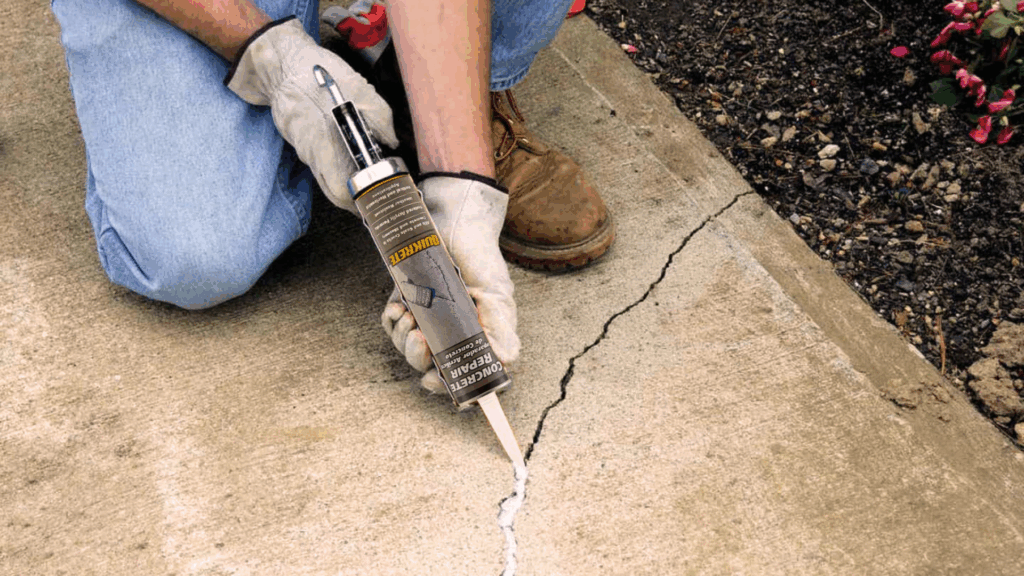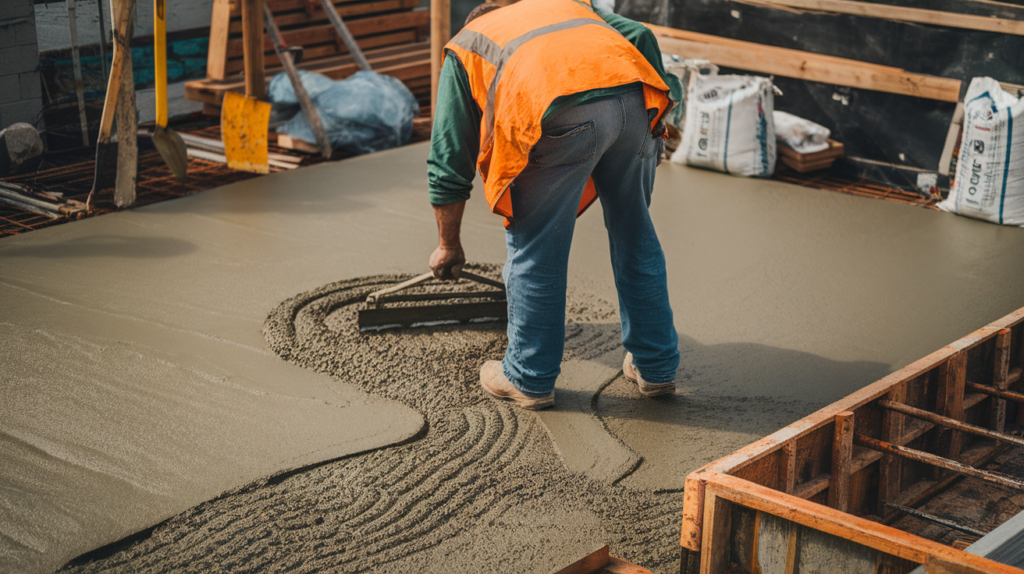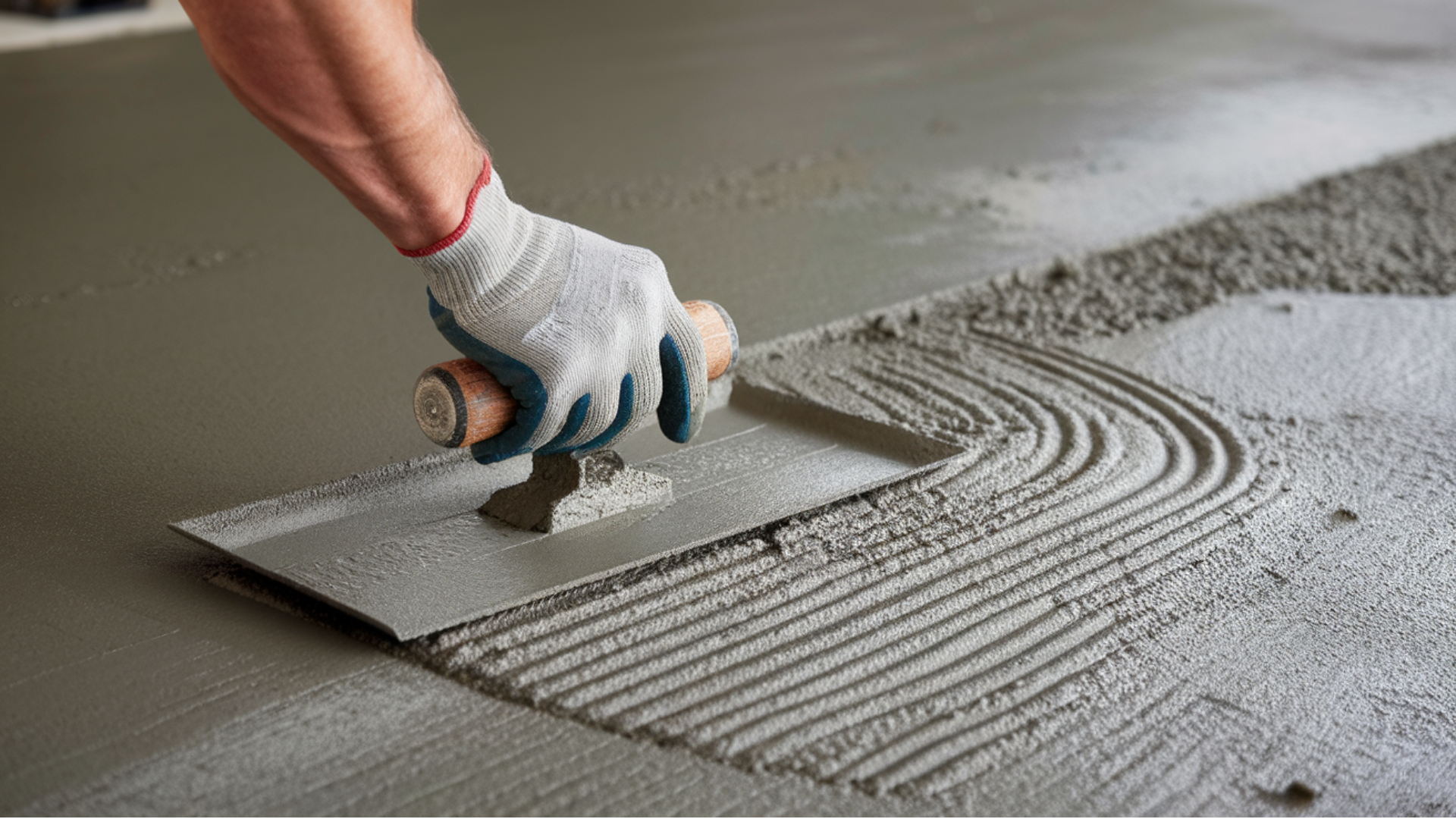When you think of concrete, you might imagine an indestructible surface that can handle anything. But here’s the truth: concrete needs care, just like any other part of your home.
From your driveway and patio to your garage floor, these surfaces face constant challenges from weather, traffic, and daily wear.
You don’t need to be a professional contractor to keep your concrete in top shape. Simple habits can make a huge difference. In this guide, I’ll walk you through:
- Easy maintenance techniques
- Common concrete problems
- Cost-effective protection strategies
If you’re a homeowner worried about cracking or just want to keep your surfaces looking great, this blog has you covered. I’ll break down concrete care into straightforward, actionable steps that anyone can follow.
Ready to become a concrete care expert?
What Is Concrete Maintenance and Why Does It Matter?
Concrete maintenance is simpler than it seems – it’s all about regular care. Just like you take care of your car or shoes, concrete needs some attention too.
When I first learned about concrete care, I was surprised by how easy it can be. It comes down to four simple steps: cleaning, sealing, inspecting, and repairing.
Think of it like a health checkup for your concrete surfaces. Neglecting maintenance can lead to cracks, stains, and wear and tear.
Regular cleaning, stain removal, and sealing will protect your surfaces and prevent costly repairs down the road.
Investing time in maintenance now can save you thousands later. Wouldn’t you rather spend a little time caring for your concrete than a lot fixing it later?
Essential Concrete Maintenance Tips You Need

1. Sweep Away the Trouble
I quickly learned that prevention starts with a simple broom. Debris like leaves, dirt, and small stones might seem harmless, but they can scratch and wear down your concrete over time.
Regular sweeping helps stop these small particles from causing long-term damage. It’s like brushing your teeth – a quick, daily routine that keeps bigger issues from developing later.
2. Wash with Care
Cleaning concrete doesn’t require heavy scrubbing.
Just use a mild detergent or a concrete cleaner that’s designed for the job, nothing too harsh that could strip away its natural protection.
Water and gentle soap work best. I’ve learned that harsh chemicals can cause more harm than good, so it’s best to stick with simple, effective methods.
Pro tip: Test your cleaning solution on a small, hidden area first. It’s like trying a new recipe; always start with a small batch.
3. Seal the Deal
Sealing is like giving your concrete a protective shield. Every few years, apply a good concrete sealer to keep water, oil, and stains from soaking in.
This simple step can really extend the life of your concrete.
When I sealed my patio for the first time, I was amazed at how much cleaner and brighter it looked. It’s not just about protection – it’s like giving your surfaces a fresh makeover.
4. Crack Detective Work
Become a concrete detective. Regular inspections can save you time and money.
Look out for small cracks, flaking, or any changes in the surface. Catching these early is like fixing a small leak before it turns into a big problem.
I make it a habit to check my concrete surfaces every few months. A little attention now can prevent costly repairs later.
5. Winter Warning
Salt and harsh chemicals are concrete’s worst enemies in winter.
They can damage your surface quickly. Instead of salt, try using sand for traction, or opt for plastic snow shovels that won’t scrape the concrete.
I learned this the hard way when my first winter left visible marks on my driveway. Prevention is always cheaper than repair.
6. Furniture Finesse
Heavy furniture can damage concrete. Avoid dragging it – always lift and place.
Metal chair legs or heavy planters can cause deep scratches or chips if you’re not careful. I use protective pads under furniture legs to prevent damage.
It’s a small investment, but it helps keep your concrete looking great. I keep a set of felt pads on hand for this very reason.
Best Tools and Cleaners for Concrete Care
Maintaining concrete doesn’t require a professional toolkit. With just a few simple, affordable tools, you can keep your surfaces looking great and extend their lifespan.
These are some must-have items for anyone serious about concrete care.
- Stiff-Bristle Broom: Removes dirt, sand, and debris from concrete surfaces. Prevents scratching and surface damage.
- Garden Hose or Pressure Washer: Provides deep cleaning with water. A pressure washer offers more intense cleaning power.
- Mild Concrete-Safe Detergent: Cleans without damaging concrete. Use pH-neutral cleaners designed specifically for concrete surfaces.
- Crack Filler or Patch Kit: Repairs small cracks and prevents them from spreading. Stops minor damage from becoming major repairs.
- Long-Handled Scrub Brush: Helps clean tough stains and hard-to-reach areas. Saves your back while providing thorough cleaning.
Pro Tip: Avoid bleach and acidic cleaners – these can seriously damage your concrete surface. Stick to concrete-specific cleaning solutions for the best results.
Signs Your Concrete Needs Immediate Maintenance
Concrete isn’t immune to damage. Small issues can turn into costly repairs if ignored. This section highlights the warning signs that your concrete needs attention.
1. Expanding Cracks
Cracks aren’t just cosmetic. When I first spotted small cracks in my driveway, I didn’t think much of it.
However, they can quickly escalate into bigger issues, allowing water to enter and cause further damage. If you notice cracks spreading, it’s time to address them.
2. Surface Pitting and Flaking
Pitting and flaking are signs that your concrete is in trouble. These issues aren’t just unsightly; they indicate deeper problems.
Chipping or crumbling surfaces can result from harsh chemicals, freezing, or poor installation. Don’t ignore these signs; take action before it gets worse.
3. Uneven Surfaces and Lifting Slabs
A smooth surface is a healthy surface. Bumps, dips, or sections that seem to rise or sink are bad news.
This can happen due to soil movement, tree roots, or water damage underneath. I’ve seen driveways look like mini mountain ranges because of ignored ground shifts.
These aren’t just ugly, they’re dangerous. Uneven surfaces can cause trips and further structural damage.
4. Stubborn Discoloration
Some stains won’t come off with regular cleaning. Persistent discoloration can be a sign of deeper issues, like chemical damage, moisture problems, or something else going on beneath the surface.
If cleaning doesn’t fix it, your concrete is trying to signal that it needs attention.
5. Water Pooling After Rain
Water should drain, not linger. If you notice puddles that don’t dry up quickly, your concrete might have drainage issues.
Standing water can cause erosion, cracking, and long-term damage. It’s like leaving a wet sponge out; eventually, it causes problems.
How Often Should You Clean Concrete?
Concrete maintenance is about consistency, not perfection. A little regular care goes a long way in preventing bigger issues later. Timing is key to keeping your surfaces in great shape.
Weekly Sweep
Sweep your concrete once a week. A quick five-minute sweep can save you a lot of time later.
Dirt, leaves, and debris may seem harmless, but they can scratch and wear down the surface over time. I make it part of my routine, just like checking my phone in the morning.
Bi-Monthly Cleaning
Every couple of months, give your concrete a proper wash. It doesn’t need to be a big cleaning session, just a simple rinse or a light scrub with a mild cleaner.
It’s like giving your concrete a quick shower. This helps remove stubborn stains and dirt, and keeps the surface looking fresh.
Annual Deep Clean and Inspection
Twice a year, inspect your concrete carefully. Look for cracks, discoloration, or anything that seems off.
This helps catch small issues before they become big, costly problems. Think of it like a regular health checkup; preventing trouble is always better than dealing with it later.
Sealing
Every 2-3 years, seal your concrete. It’s like putting on a raincoat to protect it from the elements. High-traffic areas may need sealing more often.
Driveways, patios, and walkways take more wear, so sealing them helps protect against water, stains, and damage.
Pro Tip: Don’t stress about perfection. Consistency is key. A little care goes a long way.
Common Mistakes People Make with Concrete Care

Concrete care isn’t rocket science, but people often make simple mistakes. This is what to avoid:
- Skipping the Sealer: Forgetting to seal concrete leaves it vulnerable to water, stains, and weather damage. Sealers are your concrete’s protective shield.
- Using Metal Shovels: Metal shovels scratch and damage concrete surfaces. Switch to plastic shovels or snow blowers to protect your concrete.
- Ignoring Small Cracks: Small cracks aren’t harmless. They can grow and lead to major structural issues if left untreated.
- Wrong Cleaning Products: Harsh chemicals can destroy concrete. Always use pH-neutral, concrete-specific cleaners.
- Believing Concrete is Maintenance-Free: Concrete needs regular care. It’s not a set-it-and-forget-it surface. Consistent maintenance prevents costly repairs.
Conclusion
Concrete is tough, but it still needs a little care. Just like anything else around your home, it needs a little love and attention. I’ve learned that maintenance isn’t about being perfect – it’s about being smart.
Set a yearly reminder on your phone. Spend a few minutes checking your concrete surfaces. Look for cracks, clean up stains, and give it a quick seal.
These small steps can save you thousands in repairs. Think of it like a health checkup for your driveway, patio, or garage floor.
Remember, you don’t need to be a professional contractor. Simple habits make a huge difference. A broom, some mild cleaner, and a watchful eye are your best tools.
Your concrete will thank you by staying strong and looking great for years to come.

